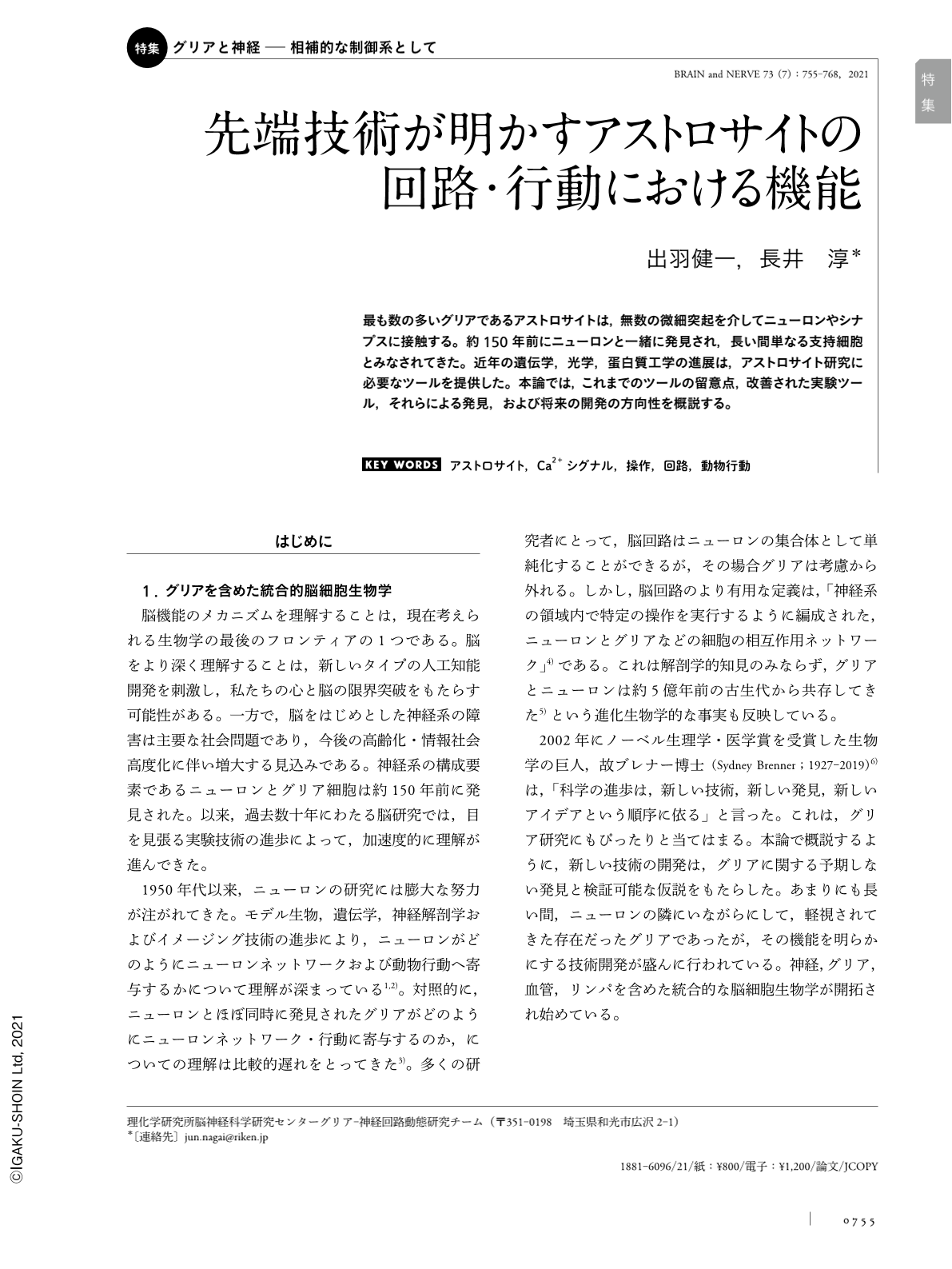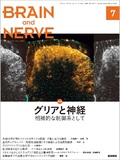Japanese
English
- 有料閲覧
- Abstract 文献概要
- 1ページ目 Look Inside
- 参考文献 Reference
最も数の多いグリアであるアストロサイトは,無数の微細突起を介してニューロンやシナプスに接触する。約150年前にニューロンと一緒に発見され,長い間単なる支持細胞とみなされてきた。近年の遺伝学,光学,蛋白質工学の進展は,アストロサイト研究に必要なツールを提供した。本論では,これまでのツールの留意点,改善された実験ツール,それらによる発見,および将来の開発の方向性を概説する。
Abstract
Besides neurons, the other half of central nerve system (CNS) cells are glia. Astrocytes, the most abundant glia, were first found together with neurons around 150 years ago, and have long been considered as merely supportive cells. Recent studies suggest that, far from being a “glue”, they are specialized contributors to brain physiology and disease. Astrocytes contact neurons and synapses via their myriad fine processes. They exert versatile homeostatic and neuro-modulatory functions to regulate CNS activity. As the term neuroscience suggests, brain research in the twentieth century was dominated by neuronal studies. In contrast, astrocytes, without which neurons cannot properly function, have been understudied partially due to a lack of tools. Fortunately, recent genetics, optics and protein engineering now provide the tools needed for astrocytes to tackle an exciting area of integrative brain cell biology. This paper presents a summary of the improved tools, the insights that they delivere, and the potential directions of future developments.

Copyright © 2021, Igaku-Shoin Ltd. All rights reserved.


